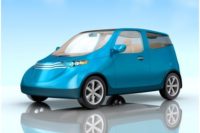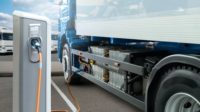U.S. regulators recently adopted a new rule that will force electric vehicle (EV) manufacturers to include a device in their EVs to emit a sound at up to 19 mph to protect pedestrians starting in 2019.
The new rule is controversial in the EV community. While most admit that quiet cars can be a problem at low-speed, especially for the visually impaired, people also fear that adding a sound will remove an important benefit of electric vehicles.
Tesla and CEO Elon Musk have seen this coming and they have been working on a particularly interesting and nuanced solution for a while now.
During a Q&A session back in 2013, Elon Musk answered a question from a Tesla owner worried about children playing in her neighborhood and not hearing her Model S coming at low-speed:
“There is this question of having the Model S make a noise. Obviously, the challenge is to avoid noise pollution at the same time.” He added: “I think the sensible and ideal thing long-term is to have proximity sensors that direct a pleasant sound in the direction of where somebody is walking – so therefore, it’s the least amount of noise, and it’s not annoying, and it’s only going to where it needs to go. That’s what I think is the right long-term solution.”
Tesla did indeed continue working on the problem since earlier this year, Model S schematics with a device for “pedestrian noise” leaked.
Now the actual noise is only one part of the problem. As Musk mentioned in his explanation, you need to detect the pedestrians in order to send the noise toward them.
Until recently, it would have been difficult to do so, but with Tesla’s new Enhanced Autopilot sensor suite and 360-degree camera coverage, it’s now possible for Tesla to detect pedestrians in the driving environment of the Model S and X.
A combination of the “speaker pedestrian noise” and the new sensor suite could be all Tesla needs to implement the system described by Musk.
Whether or not such a system would be allowed under the new rule which requires for the sound to be “recognizable as a motor vehicle in operation” is yet to be resolved.
Source: https://electrek.co



